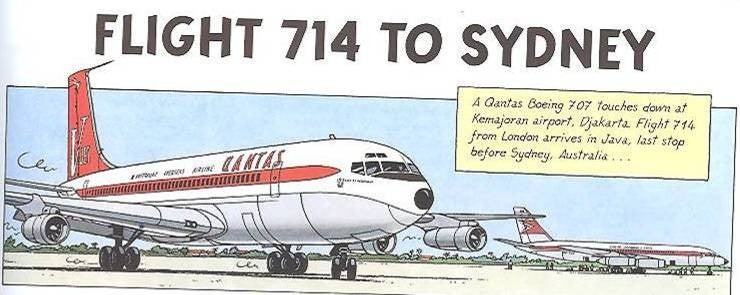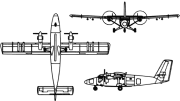- sausage paddy
- Feb 25, 2009
-

|
The Story of the Heinkel 219 Uhu I: A Owl in Search of Parents
Here's that Analysis of Nazi Bureaucracy You Wanted
Aircraft Procurement in the Third Reich was profoundly hosed up. To give you an idea as to how badly procurement failed, know that only in daytime fighters (the Bf 109 and the Fw 190) did the Reich manage to maintain parity with their opponents during the Second World War. Nearly every other airplane fielded by the Nazi state during was either obsolete or slowly became obsolete while waiting for a replacement. The Reich had three critical wartime procurement projects – the Me 210, the He 177, and the 'bomber b' project (a project to make a next generation medium bomber to replace the He 111, Do 217, and Ju 88) – failed abjectly, with the products of these programs being significantly delayed and often unusable. In 1941, 20% of Reich aircraft production was lost because of scheduling for new types to replace older ones, types that did not appear. These procurement failures were a key factor in the Luftwaffe's defeat.
Much of the blame for this defeat lies with the leadership of the Reich Air Ministry (The Reichluftfahrtministerium, or RLM.) Both Hitler and Goering provided absolutely terrible leaders, with Hitler's ideas often a significant distance from reality, and Goering acting as a indolent yes-man to these wishes. RLM department heads were kept in conflict with one another (by the design of Goering, who was afraid his more industrious subordinates would ban together to take his position) and were often unsuited to their posts. This is especially true of the man in charge of procurement at the RLM, Ernst Udet. While the shambles of Luftwaffe procurement programs was partially his fault, it is difficult to blame him too much. Udet meant well, and would pay a terrible price for taking the position.
And he was a man of genuine talents. Ernst Udet was a war hero from World War one, the second highest scoring German ace after the Red Baron, Manfred Von Richthofen. (They both flew in JG 1, the 'Flying Circus', which was led after Richthofen's death by Hermann Goering.) In the 1920s, he took up barnstorming, and shooting aerial footage for movie studios on the side. He also was a playboy, a very good cartoonist, and a skilled storyteller. Alas, none of these skills were useful as the head of procurement for an air force. How he got the job in the first place is a story in itself: After the Nazis came to power, they decided to recruit Udet to the party for the good press copy it would make (Udet being a national hero an' all.) Next, Udet was recruited into the air force; Udet didn't really want a Colonel’s commission, and had to be induced into joining with the gift of two Curtiss Hawk biplanes that Udet wanted, but couldn't afford. Then, Hitler and Goering one day were out nazing about when Hitler remarked: “That Udet must be one of our greatest aviation minds. We should make him head of procurement for the Luftwaffe.” Goering, instead of saying something like “Mien Fuhrer, he is an expert pilot and was the head of his own aviation firm, but he's no engineer”, said of course “Yes mien Fuhrer!” And so a guy who was only in the air force and Nazi party purely for propaganda purposes was given one of the most demanding positions in the whole RLM. Imagine Tom Cruise suddenly being made Secretary of the US Navy, and you can understand the skill mismatch.

Ernst Udet. Because of his score in the last war, he got all of his Nazi uniform DLC unlocked immediately.
It should be said Udet's tenure was not entirely negative. He saw the Vulture-winged Ju 87 into production, (in fact, it was Udet's idea for the iconic 'Trumpets of Jericho' the Stuka was equipped with) and was the Luftwaffe's chief advocate for dive bombing. However, he also made the He 177 into a dive bomber, ensuring the program was a disaster, and kept pressing Messerschmidt to put the Me 210 into production, creating more production delays for the badly needed escort fighter. Unlike Goering, however, Udet understood the increasing gaps in Germany's air force, and felt that the reversal the Luftwaffe was dealt in the Battle of Britain was partially due to his procurement failings (viz. The Me 210 and the He 177.) Formerly a bon vivant, these failures (and the constant maneuverings of his rivals and the increasing blame he was taking for Germany's messed procurement) drove him over the fuzzy border from playboy to alcoholic. Udet also began to salt his alcoholism with a liberal dose of substance abuse. Ernst Heinkel met Udet during the Blitz, and later wrote “...I hardly recognized him. He looked bloated and sallow, as if he was being torn to pieces inside. [...]He was suffering from a irremedical buzzing in his ears and bleeding from his lungs and gums” which Heinkel thought was from Udet's his poor diet of nothing but meat, and his constant intake of booze and cigarettes. Goering tried to send him to a health spa after Heinkel's interview, but Udet returned within days due to anxiety as to what Ernst Milch would pull while he was away.
A rival of Udet's at the RLM, Ernst Milch, as head of manufacturing, was the only top RLM official who had some qualifications to be in his position. Milch was the founder of Lufthansa, and had many years experience in management. Detail oriented and with an excellent grasp of numbers, Milch was instrumental in rebuilding the Luftwaffe. In fact, he was so instrumental that Goering would periodically mess with his position and take away his powers, as he was a little too good at his job. This is a actual, real conversation those two had at one point. Goering (who had a love of titles) had just taken several of Milch's responsibilities onto himself:
Milch: “You are ruining the Air Force this way. Somebody has to be in charge of everything. If I don't do it, you will have to...but you won't.”
Goering  “From this day forward I will actually live up to my responsibilities. Honest!” “From this day forward I will actually live up to my responsibilities. Honest!”
Milch: “I don't believe it. I request to be relieved of my post.”
 “Look here, Milch, I'm not demoting you because you have failed, but because you've succeeded too well. The Party keeps telling me that it's Milch who does all the work. And I won't stand for that.” “Look here, Milch, I'm not demoting you because you have failed, but because you've succeeded too well. The Party keeps telling me that it's Milch who does all the work. And I won't stand for that.”
 “Oh and your request? Denied.” “Oh and your request? Denied.”

Ernst Milch.
Milch is to be the villain in the story of the He 219 that I'm slowly getting around to, though his essential objection to the program at least had reason behind it. For Milnch rarely acted without reason – one can think of him as the Nazi Robert S. Macnamara. Milnch was very conscious of the limited production facilities Germany had, even with its stated goal at the time: taking Lebenstrum from the Slavic countries while protecting itself from interference from France and Great Britain. His solution to this problem was fairly rational – develop a few multipurpose aircraft to maximize Germany's industrial base. He was unlike Macnamara in that he was at heart rather insecure: as a man who had accomplished big things, and he was always fearful of events reducing his position. Unfailing courteous to subordinates, he would freak out if he felt on of his colleagues was trying to undermine him. So while he was mostly a level headed, intelligent administrator, the drama of the Third Reich often got to him, which didn't help his working relationships. Another flaw was his obsession with rationalizing production, which he viewed as a priority outstripping all other considerations. This had two effects: it mostly choked off the development of new aircraft after the late thirties, as Milch always preferred to get existing airframes to be modified for new conditions rather than developing new aircraft. Milch also had the tendency to say a certain airframe was 'good enough' for the job it was doing, and it often was – for the present. The future, however, was not prepared for. This obsession with rational production would also leave Milch making decisions that looked good on paper, but were utterly terrible in the real world of wartime production. This seems to be aided and abetted by Milnch being a numbers guy, not an engineer. He often had unrealistic ideas as to what a airframe could be modified to do (a trait that is quite Macnamera). For example, in answer to the B-29 threat of 1943, Milnch wanted to modify the (obsolete) Bf 110 into a high altitude interceptor. Milnch was also, without realizing it, making a very risky gamble: he was betting that Germany could win a war with its existing aircraft types, and the enemy would not develop better ones. This was, of course, a bet the entire Reich was to loose.
As a result of Udet and Milch at start of the war, the Luftwaffe was a excellent close support weapon, though lacking in most other functions, especially any that required airframes very different from the fighter/close support/medium bomber role. Some of these failures (viz. The Fw 200 Condor) you may remember.
Anyway, this is a long walk to expand on the point we started with: the Luftwaffe procurement was profoundly hosed up. This stroll through the fascist procurement garden is critical as these failures did not change throughout World War 2, informing the development and deployment of the He 219. It was failures of procurement that lead for the He 219 to be put into production in the first place, and it was this garden of failure that kept it from being deployed in large numbers. With the assistant gardeners all fighting each other and the head gardener mostly interested in his opium poppies, it's no wonder that the garden itself turned out a wasteful mess.
And that's before other people started breaking into the Garden and setting bits of it on fire.
Prototyping Owls
So with that background of chaos and confusion, meet the unlikely father of the He 219: the He 119. (That name is about the last logical progression for some time, so please savor it.)


The He 119 was a 1937 project by Heinkel to test out modern ideas about aerodynamics. It featured a glass nose like the He 111, but mounted the prop directly in front of the nose, the drive shaft bisecting the cockpit. Powered by twin DB 601 engines mounted in the fuselage, it actually did set a record in 1937, flying 505 km/h with a payload of 1,000 kg over a distance of 1,000 km. Heinkel, of course, dreamed of selling a version to the military, but at the time, DB 601s were essentially unobtainable. Several years before the invasion of Poland, the German aircraft industry found itself in more or less chaos. Hitler and the Luftwaffe had drawn up plans for an adequate air force, and the sheer resources it would take were beyond German means. (One early plan included a large strategic bomber force, so large that the paper air force would have required 85% of the world's aviation fuel production to supply it.) The result was a push for numbers, while test programs were curtailed as an economy measure. In that context, there was no room for a recon plane with the same engines as a Bf 110. Two He 119s were sold to Japan, where the ideas were later adapted into a Japanese X-plane, the Yokosuka R2Y Keiun . The remaining airframes served as engine test-beds.
During its time as an engine tester, the He 119 flew with a true monster of internal combustion powering it: the DB 613. The power plant for the He 177 heavy bomber Heinkel was developing, they were DB 601 V12s mounted side by side in a single engine block. Displacing 67.8 liters and supercharged, this engine made 2000 hp. (Interestingly, this engine would later become infamous for engine fires, but in the He 119 the DB 613 had been tested till it ran like a Teutonic Packard.) Heinkel saw opportunity in this high performance configuration, and in April 1940, he pitched the RLM an enlarged and improved He 119, powered by an improved DB 613. A private venture by Heinkel, the P.1055, as the prototype was known, was to have been a high speed, high altitude reconnaissance plane, and featured the latest in aviation technology. It had tricycle landing gear, a pressurized cabin, and provisions for compressed air ejection seats which had been developed for the He 280 jet fighter prototype. Other features included a contra-rotating propeller and further engine tweaks, adding a combined supercharger-turbocharger with methanol-water injection for superior high altitude performance, producing an (estimated) 3,500 horsepower. For defense, it was to have twin remote turrets instead of a tail gunner. With great aerodynamics and a heavy bomber engine powering it, P.1055 was projected to have performance like that of a later-era De Havilland Mosquito: a 700 km/h top speed with a 3,500 km range. The war situation was so rosy for Germany at this point initial pitches emphasized that P.1055 would be useful post war as a long range mapping plane, when Germany would own vast chunks of Africa, the mideast, and various other untermenchen lands. A few of these features would show up in the production He 219; specifically the twin tail, the pressurized cabin, and the tricycle landing gear.
The RLM showed some interest in P.1055, but was also non-committal. The main hangup for the RLM was the new technology involved, which would mean that P.1055 would only enter service in 1943, if not later. The RLM by this point had jet engine technology under development, they worried that the new aircraft might be superseded by jet designs by the time it entered service.
Meanwhile, Germany had started World War 2 with almost nothing set aside for defending the night sky. Some daytime Bf 109s and some ancient Arado biplanes was the sum total of night defenses. This was to last until the British began attacking at night in almost entirely ineffectual raids, shortly after the fall of France. These raids were started by the British mostly for morale reasons - the besieged people of Great Britain wanted to know they were striking back somehow - and were roughly as effective as Zeppelin raids during the previous war. None the less, this new threat was a political liability, if nothing else, in the eyes of Hitler, and Luftwaffe General Joesef Kannhuber was given the job of building night defenses for continental Europe.
Joesef Kammhuber is another important character in the He 219 story. He first built an innovative night air defense grid that stretched from Denmark to the Swiss border, later to be known as the Kammhuber line. He also, astonishingly, nearly defeated Allied Night bombers before they could wreak havoc on Germany. Intercepting British bombers as they returned to their home airfields from their nocturnal raids, Kammhuber's small force of Ju 88 intruder fighters caused such casualties that the British were considering halting night raids completely. Then, Hiter intervened, and ordered Kammhuber to stop. “Germans must see the enemy bombers shot down” Hitler stated. Hitler also pointed out that the raids were increasing, not decreasing, and therefore the intruder raids were pointless. What Kammhuber thought of this is not recorded. The Allies much later in the war were to take up these tactics against German aircraft to devastating effect.

A early failed idea at night defense: a grid is made in the sky by many spotlights, making aiming more accurate by AA guns.
Anyway, General Kammhuber was not only a competent officer, but one who worried a fair bit about the potential of air raids against Germany. He was unsatisfied with the types of aircraft available to the night fighter divisions (Nachtjagddivisions or NJGs) since he had first formed them. While the Bf 110s and Donier 17s were more than capable of shooting down the twin engine Wellingtons, Hampdens and Whitelys the RAF was attacking with, new planes were already appearing. The four engined Sterling and Halifax bombers were now flying, as was a new twin engine bomber, the Manchester. More pressing to Kammhuber, only the Bf 110 was actually a fighter in any sense; and it was being allocated to him as the Bf 110 proved too vulnerable to Allied fighters to actually work in the escort fighter role. The rest of the NJG's planes were fast medium bombers (Do 17s, and Do 217s, along with a few Ju 88s): gunships capable of effectively blowing heavy bombers out of the sky, but vulnerable to escort fighters should the British start fielding them. So, Kammhuber wanted a purpose-built night fighter: one with twin engines, stable with good maneuverability, extensive glazing for better visibility, and weapons mounted out of the crews field of view, so the flash would not ruin their night vision. It was to put the term “fighter” back in night-fighter. To this end, Kammhuber had taken the daring step of going directly to Hitler with his dreams of a purpose-built night fighter. Hitler was impressed with Kammhuber's arguments, and gave the General the resources to pursue procurement outside the RLM.
NJG 1's Bf 110s.


Back at the Heinkel works, in August 1940, Heinkel tried again to spark interest by offering several alternative takes on P.1055, which tried to show that the technological risk could be hedged as much or as little as the RLM desired. Alternate takes on the prototype imagined it as a Zerstorer (long range heavy escort, like the Bf 110), or as a fast high altitude bomber. Heinkel was unlucky in the timing of this new proposals. For one, diversification of this odd prototype just made it nearer several designs already under development elsewhere. The Arado A240 had already flown, and it featured a pressurized cabin, good high altitude performance, and remote tail turrets. Fast bombers were also under development in the aforementioned bomber B series. And, the Luftwaffe had already put enormous resources toward the successor of the Bf 110 – the Me 210, which was too big to fail. It was not only to replace the Bf 110, but also the Ju 87 Stuka and the Hs 193. (Like some other multi-role too big to fail aircraft, it would turn into a disaster.)
The RLM was still admittedly interested in a reconnaissance plane, and despite emphasizing to Heinkel that he should concentrate on that aspect alone, P.1055 went forward as a concept as a recon flyer and as a fast bomber/destroyer. (I suspect Heinkel saw an opportunity to, shall we say, schnorr in on the Destroyer Market, especially as the Bf 110's days were known to be numbered and the Me 210 procurement was not going well. Heinkel also no doubt knew Milch loved a multi-role aircraft, which was of course more 'rational' than a bespoke airplane.) For about a year between mid 1940 and mid 1941, meeting were held where the two sides tried to hammer out what the basic performance numbers should be, all while Heinkel received many notes from the RLM, like a dizzy Hollywood producer commenting on a screenplay. It went something like this:
- Right now the weapons for defense is inadequate, being one rear mounted machine gun and twin machine guns in the wings. We need to fix this. I think remote control turrets are the answer.
- Also, consideration must be given that while this plane would be untouchable now, by the end of 1942 the enemy might have jet fighters. So we need to give this aircraft the same defensive abilities as a heavy bomber.
- We should consider also making this aircraft able to operate over the North Atlantic. What kind of de-icing options do we have?
- I just got back from lunch with my menchen (we may have had some beer with our snitzel) and we're wondering if it can land on water. U-Boat resupply?!?
- Does it even make sense to develop this thing as a bomber? The He 177 is going to be, like, the best, fasted, heavy bomber ever and is going to be entering service as soon as the unpredictable fire problem is worked out.
- I like this variable wing area idea by having modular interchangeable outer wing panels.
- P.1055 should have six (6) remotely controlled turrets, three above, and three below. The third crewman will operate all six. This will allow formations of P.1055s to create a 'hedgehog' of fire to protect bombers in the escort role.
- Turrets will be aimed via periscope.
- Add two more gun emplacements above and below to this puppy. Gun emplacements now eight (8).
- poo poo, that's a lot of turrets. Make them retractable for less drag.
- Actually, maybe we should cut down on the turrets. We want this thing to be fast as hell.
- Keep the armor though, as if the enemy gets jets, only a armored, armed recon plane will make any sense. Have fewer turrets, but make each turret bigger and more powerful.
- Axe the bomb bay, I'm just not feeling it anymore.

P.1055 at its insanity apex.
- P.1055 is written down in the big book of Nazi war production, the official name is: He 219.
- Let's move the props to the wings but keep the internal fuselage engine. Easier to arm that way.
- OK, I guess the fuselage engine isn't working, let's move 'em to the wings with the props. Can't be original all of the time...
- Got your note: re: should the new plane be the He 250 or something as it's not really like the He 119 anymore. Let me get back to you on that.
- Our boss, Gen. Udet, is coming for a visit. Sparkle, baby!
Udet's vist was to discuss with old man Heinkel the state of war production, and the progress of the He 177 and the He 280. Heinkel of course showed the RLM head of procurement the P.1055. Udet was very impressed; the man might have been a dilettante, but he understood the gaps in Germany's aerial line up. He then did something that is all by itself a good example as to how badly Reich war production was messed up: the head of aircraft procurement in the Reich phoned General Kammhuber and told him that Heinkel had a prototype that might just be the aircraft that the General wanted to build.
---------------------------------------------------------------------------------------------------------------------------
When Udet told him about Heinkel's prototype, Kammhuber immediately sent a posse of his veteran night fighter pilots to Heinkel to check out the He 219 project, where they reported favorably. Kammhuber visited the factory next, and also was very impressed. Heinkel now had a backer and a direction for He 219 – as a purpose built night fighter. Some of the other ideas for the He 219, specifically making a reconnaissance or a fast bomber version were never entirely dropped, but were not worked on after this.
Once it found its center, the He 219 became one of the few drama-free Luftwaffe procurement programs. This is quite impressive, especially considering that the He 219 did have some genuinely revolutionary details: it was the first operational combat aircraft to employ an ejection seat, and also Germany's first combat aircraft to enter production that had cabin pressurization. It was also the first Luftwaffe warbird to be built with radar installation explicitly in mind.
That its development was straightforward was partially Heinkel's influence – up until now, Heinkel had been spending his own money developing the He 219, and wanted a return now that a sponsor had been found. Heinkel also was interested in building a fighter because he considered himself the 'king of speed' among German aeronautical engineers, and had up until this point been denied a chance to build a really fast fighting machine. The development of the He 219 was very unusual in other respects as well. The commander who's units were going to use the aircraft was directly involved in its production. In addition, extensive input came from the night-fighter pilots who were going to be using it on the front line, the only Third Reich program that I know of that benefited from this. These factors made the prototyping of the Owl admirably focused.
In October 1941, a High Level meeting of the German General Staff convened at the Heinkel works to discuss Heinkel's projects – the old He 111 medium bomber, the He 177 heavy bomber, the He 280 jet fighter, and the He 219. When it came to production of the specialist night fighter, the committee, in agreement with the RLM, had a logical view:
“Given the way the war is now developing (IE the Nazi invasion of the USSR this summer), we cannot match the production capacity of America and England. In order to continue the war successfully, we must build quality aircraft at the cost of quantity. The air force cannot afford to loose its air crews, who in addition to their level of training possess extensive front line experience, because we given them aircraft that are inferior to the enemy...”
This was an astute observation. In the face of a materially superior enemy, German war planners hoped technology could carry the day. But they also ran completely contrary to Milch's perspective, who never gave up hope that a 'good enough' production solution could be found. Trouble was brewing.
Udet might have been able to be a counter to Milch's interference, but his tenure and his life ended but a month later. Haunted by premonitions of death, Udet's health declined from Heinkel's description, and with the invasion of the USSR, the already overtaxed aviation industry had its burdens redoubled. Udet could take the strain no longer, and shot himself while on the phone to his mistress on the 17th of November, 1941. Milch and Goering were profoundly upset at Udet's suicide. Despite their professional friction, they had (like all that knew him) always liked Udet as a man.
The Owl that Would Hoot in the Night
I'm spending a shitload of time here describing the procurement follies of the Third Reich, so let me go into a little detail now about the He 219 as a warplane.
First, it was fast. The exotic DB 613(+) engines proved to be vaporware, and Heinkel substituted the DB 603 for them. The DB 603, even as a second choice, was quite an engine: an enlarged improvement on the DB 601, they were an inverted V12 displacing 44 L each, and making 1500 horsepower. Dalmier-Benz also added a supercharger for better high altitude performance. The DB 603s powered several later war projects, including the Me 410, the Do 335, and the Ta 152 – and in a very 'one of these things is not like the other' deal, the Maus super tank prototypes. The He 219 could fly 600 km/h – the only night-fighter the Nazis deployed capable of keeping up with the De Havilland Mosquito. This top speed was also 100 km/h faster than the Ju 88 in night-fighter trim. As it came together, the He 219 also had a hell of a lot of firepower – only slightly less than those American B-25s that used to machine gun merchant ships to death in the Pacific. The ventral tray mounted four 20mm rapid fire cannons, and in the wings were mounted two more 20mm cannons to add to the killing power, just 'cause. Early in 1943, 'Slanted music' mounts had been adopted by German night fighters, (slanted music being a gun emplacement pointed upward at anywhere from 45 to 75 degrees. British heavy bombers had no downward facing turrets, and thus were particularly vunterable to attack from below.) The He 219 became the first aircraft built to have such a mount as standard. Its slanted music station could mount just about anything, from twin heavy machine guns to the twin 30mm cannons mentioned earlier. This is some very heavy artillery for shooting down airplanes. One or two shells from the 30mm was often sufficient to kill even a B-17 Flying Fortress. The 'jackhammer' sound of this cannon firing would soon be feared by Allied bomber crews. The Mk. 103's only disadvantage – and something veteran crews disliked – was its short range. Unnerving enough when attacking something as heavily defended as a heavy bomber; downright scary when attacking said bomber from below.
It should be noted that there is no 'correct' weapons load-out for the He 219 – spot shortages, even pilot preference, lead to substitutions and omissions. Markings too were widely variable, thanks to the practice of the Luftwaffe allowing units in the field to repaint aircraft however they wanted. Uhus started off light grey, often with dark grey or grey-violet dots or stripes. (The He 219 at Uver-Hazy is grey-on-grey violet on its upper surfaces.) Unlike other night fighters fielded, the He 219 had excellent flying characteristics, being maneuverable, yet stable and forgiving. (One pilot described the He 219 as 'old man flying' as you could just fly it without much effort. The Bf 110, in contrast, had to be trimmed constantly.)
The main problem with the He 219 was numbers. As wikipedia could tell you, only about 300 airframes were produced till the end of the war. While doing my reading for this infodump, I found that this number sounds larger than the real life result. Only one wing of one squadron (1./NJG 1) was ever fully equipped with He 219s in early 1944. Other wings (2./NJG 1 and 3./NJG 1) were significant users. Only one wing outside of NJG 1, NJG 10, an experimental night-fighter wing, could count themselves as actual operators of the He 219. Many other NJGs received He 219s in twos and threes, for training when their respective squadrons were re-equipped with the new night fighter, but in practice this change over never happened. Another fact is telling about the Owl: nearly 1/3rd of the 300 built were A-0s – that is, pre-production prototypes.
Variants of the He 219 were few, mainly being iterations on a basic theme. The types that were actually used or existed in a meaningful sense were:
He 219 A-2: Similar to the A-0, but with more endurance and slightly more powerful engines. (DB 603 AAs) Produced 1944 till the A-7 production started in November '44.
He 219 A-7: Once again, similar to the A-2, with a later version of the DB 603, the DB 603E. Produced November '44 onwards.
He 219 A-7 D-1: Five airframes that were delivered with Jumo 213E engines in 1945. These engines could generate the magic number of 2000 hp each, giving five He 219s the performance originally envisioned by Heinkel. The Jumo 213E was in heavy demand by late war German aircraft, being used by the Ju 188, the D version of the Fw 190 and its cousin, the Ta 152, and the German rival of the Owl - the spectacularly useless Ta 154.
Hutter Hu 211: Using the He 219 airframe, Hutter (a German manufacturer specializing in gliders) was going to modify the He 219 with very large wooden wings to make a high altitude reconnaissance plane. This project was abandoned when the two prototypes were destroyed in an allied air raid, a common end to late war Nazi aviation projects.
It should be noted that had the RLM or Luftwaffe deemed it necessary, the He 219 could have had the magic Jumo engines at nearly any point in its production. However, and the Luftwaffe deemed fast bombers, day fighters, and a few vaporware prototypes more important. The other limiting factor in He 219 production was something that in the thumbnail sketches you find in "German Aircraft of the Second World War" books you find described as 'production difficulties.' We will be covering these difficulties in some detail 
Initial Prototypes in night fighter black. Planned four-blade propeller did not reach production.



this is a really good post.
|




 . It's fun though.
. It's fun though.






















































